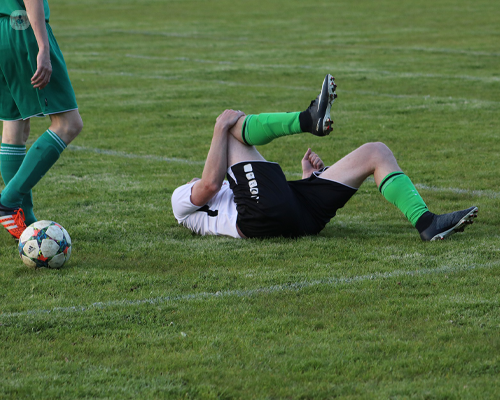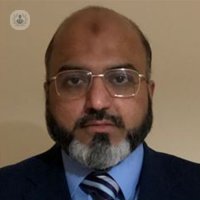Considering further aspects of anterior cruciate ligament (ACL) reconstruction
Autore:In part two of Mr Ayaz Lakdawala's double article about anterior cruciate ligament (ACL) reconstruction, the esteemed orthopaedic surgeon speaks to Top Doctors about the procedure in further detail. He discusses after care and rehabilitation among other important considerations for people who may think they require ACL reconstruction.
In part one, Mr Lakdawala talks about what should be considered before undergoing the procedure.

How is ACL reconstruction done?
I perform ACL reconstruction as a day-case procedure allowing patients to be discharged on the same day. The procedure is carried out arthroscopically (key-hole technique) through small incisions in front of the knee using camera and specialised instruments. The operation takes approximately an hour to one and half hours. The procedure is usually carried out under general anaesthetic (putting patients to sleep) or in some cases with a spinal anaesthetic, where you’ll stay awake but the lower part of your body will be numb. A family member or friend who can drive will need to accompany you after the operation in order to drive you home and then stay with you overnight.
Hamstring grafts are taken from the upper-inner area over the shin bone (tibia) area through an incision approximately one and a half inches long. Usually two tendons are harvested using specialised instruments and then prepared to be used as grafts. These tendons are folded over to create a quadrupled graft (four strands).
If required, in some patients, one of the longer tendons is sometimes trebled to create a sturdy graft. The other graft that can be used is a patella-tendon (knee-cap tendon) from the front of the knee. This graft is a one-centimetre strip with bone at each end. The inside of the knee joint is visualised with a camera and the image is projected on the large screen for the surgeon to see. Tunnels are created in the femur (lower-end of thigh bone that forms the outer part of the upper knee) and in the tibia (upper-inner part of the shin bone that forms the lower part of the knee joint).
The graft is then threaded through these tunnels and fixed with screws, staples or both. I use bio-absorbable screws in most cases. The knee joint is then checked and graft placement confirmed.
Meniscal tear is quite commonly seen with ACL tears and is dealt with either repair using specialised stitches or where repair is not possible, the torn bit is removed. So, if patient has a meniscus tear, meniscal surgery is carried out at the same time. Normally wounds are stitched up and the leg is bandaged with simple wool and crepe dressings. Local anaesthetic is placed into the wound to reduce pain after the operation.
After care
Once you have recovered from the anaesthetic, your knee pain will be assessed and given painkillers if required. You will then be seen by physiotherapists who will help you get up and walk. You may need crutches for few days.
No knee brace or splint is usually required for ACL reconstruction unless the meniscus has been repaired at the same time. You will be given wound-care instructions and shown exercises to do by physiotherapists.
You can go home on the same day and will be seen in the clinic two weeks later for stitches to removed and a wound check. The first two weeks is about wound care, trying to get the swelling down and gentle mobilisation. My team and I will provide you with all information.
Rehabilitation and recovery after ACL reconstruction
There is a structured rehabilitation physiotherapy programme and usually takes about six to nine months or a year to make a full recovery from ACL reconstruction.
Rehabilitation physiotherapy starts at two weeks after the initial pain, swelling has subsided and surgical wounds have healed.
Between two to six weeks after the procedure, exercises given to you focus on regaining muscle strength, bending and straightening of the knee and improving balance. Between six weeks and six months, physiotherapy will focus on getting you back to doing activities and sports. Depending on your rehabilitation, muscle strength and co-ordination, may be able to return to sports between six to nine months after surgery.
Alternatives to ACL reconstruction
Continuing with physiotherapy is an alternative to surgery. You may find this is all you need. Another way of stabilising the knee without surgery is bracing. During some sports, purpose-made ACL braces, which protect the joint, can be very useful. However, they are cumbersome to wear every day and in some contact sports, they are banned for obvious reasons. But they can be particularly useful in sports such as tennis and squash as well as skiing and snowboarding, if these are the times that the knee tends to give way. It doesn't appear that a brace weakens the knee.
You can see how you get on with physiotherapy first and decide to delay surgery. Those who do still need surgery later on, do just as well as those operated on within a few weeks of their injury.
How quickly can I return to work after having knee surgery?
That will depend on what your job involves. You may be able to return to work after two to three weeks if you work in an office. If you do any form of manual labour, it could be up to two months before you can return to work, depending on your work activities.
When can I start driving again?
It's usually possible to resume driving three to four weeks after surgery, or whenever you feel comfortable to put weight on your foot.
Are you considering ACL surgery? Visit Mr Ayaz Lakdawala's Top Doctor's profile for his expert advice.


